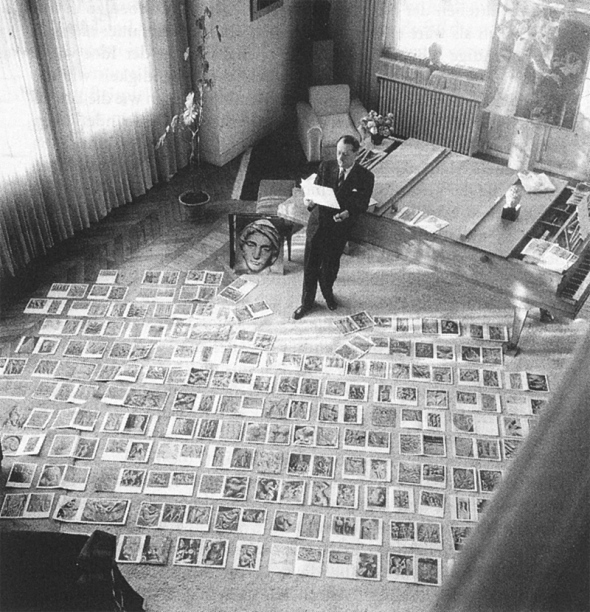Why Digital Museums Need “Walls” Part 1: André Malraux
Posted: September 17, 2012 Filed under: Museum Review, Why Digital Museums Need "Walls" | Tags: Andre Malraux, Museum Without Walls, Online Exhibition, virtual exhibition 2 CommentsThis is the first post in a 3-part series on reimaginging André Malraux’s Museum Without Walls and what it means for the future of digital exhibitions.
I’ve been trolling a number of online museums lately–The Louvre, Google Art Project, Gallery of Lost Art— and only just read André Malraux’s Museum Without Walls (1947). Museum writers and theorists interested in digital collections often reference Malraux and credit his conception of a a comprehensive collection of art reproductions (a museum– without walls!) as the forebear of today’s online museums and digital collections.
Malraux’s begins with the idea that, historically, taking an object out of its original context and placing it in a museum fundamentally changes the very nature of the object, changes its purpose from utilitarian to aesthetic. He writes, “the Art Museum brought about a drastic change, transforming the artist’s visions into pictures, as it transformed the gods into statues. … Though Caesar’s bust and the equestrian Charles V remain for us Caesar and Charles V, Duke Olivares has become pure Velasquez.”” (Museum Without Walls, pg 14). In this way, a table created for utilitarian purposes or a religious icon created to access the sublime are transformed into aesthetic objects, what Malraux calls style. Pre-historic cave painters did not believe they were creating art. They thought that drawing a buffalo on the cave wall would lend them greater strength in the hunt. These paintings are now revered as beautiful, powerful images rather than tools.
Malraux argues that his collection of reproductions performs the same transformative function but better. Photographs or art are not bound by the limitations of physical display. Exhibiting pictures of artworks is infinitely easier to access/transport/display/juxtapose than the artworks themselves. In an instant, one can place a picture of The Sphinx beside a picture of the Eiffel Tower.
True! However, what Malraux failed to anticipate and what his supporters fail to take into account is that our society has, in the decades since the book was written, fundamentally changed the way we interact with images. The great flattening of scale and texture and mobility that Malraux championed in his museum of photographic reproductions means, in the age of Facebook and Pinterest, that a picture of a Rubens painting has the same viewing impact as a picture of my neighbor’s cat.
The thing about walls is that they separate. They are a means of organization, a platform upon which objects cohere into greater meaning. Museums were able to transform objects into art by setting them apart from everyday life in a special place so that the viewer was physically, visually, mentally primed to experience the exhibition in a certain way. In the digital sphere, Malraux’s Museum Without Walls is a museum without the mental space for contemplation as art. Online, the aura of the object-transformed-into-art is lost in the infinite sea of images.
How to create an image-based online exhibition with “walls”– an exhibition that creates this mental environment? Stay tuned for Part 2!

[…] interests you, check out André Malraux’s classic Museum Without Walls, which talks about the effect of scale on art. Even reading parts of it will help you look at art in a new […]
wh0cd597912 paxil